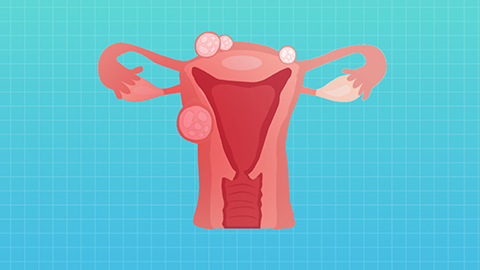What are the symptoms of uterine fibroids?
Generally, symptoms of uterine fibroids may include menstrual abnormalities, abdominal masses, abdominal pain, pressure symptoms, increased vaginal discharge, and others. If related symptoms occur, timely medical consultation is recommended to confirm the condition and follow medical advice for treatment. Detailed analysis is as follows:
1. Menstrual Abnormalities
Intramural and submucosal fibroids can enlarge the uterine cavity, affect uterine contractions, and lead to significantly increased menstrual flow, with bleeding far exceeding normal levels. Some women may also pass large blood clots. The menstrual period may become prolonged, extending from the usual 3-7 days to more than 10 days. Irregular vaginal bleeding outside the menstrual period may also occur. Long-term excessive bleeding can lead to anemia, causing symptoms such as fatigue and dizziness.
2. Abdominal Masses
As fibroids grow larger and the uterus enlarges to the size of a uterus at three months' gestation, a firm mass may be felt in the lower abdomen. The mass is usually centrally located in the lower abdomen, with a smooth surface and regular shape. It becomes more noticeable when the bladder is full in the morning because a full bladder pushes the uterus upward, making the mass easier to palpate. As the fibroid grows, the mass will gradually increase in size.

3. Abdominal Pain
Most patients do not experience significant pain in daily life. However, when fibroids undergo red degeneration, sudden severe lower abdominal pain may occur, characterized as persistent pain, often accompanied by fever, nausea, and vomiting. Abdominal palpation may intensify the pain. When pedunculated subserosal fibroids undergo torsion, acute lower abdominal pain occurs suddenly and is severe, requiring urgent medical attention. Some patients may experience a feeling of heaviness in the lower abdomen, back pain, or discomfort during menstruation, which may worsen during the menstrual period.
4. Pressure Symptoms
Fibroids located in the lower segment of the anterior uterine wall can compress the bladder, causing frequent and urgent urination, with increased frequency of urination but small urine volume each time. In severe cases, it may lead to difficulty in urination or urinary retention. Fibroids on the posterior uterine wall can compress the rectum, causing constipation, difficult defecation, hard stools, and straining during bowel movements. Some patients may also experience tenesmus, a sensation of incomplete evacuation.
5. Increased Vaginal Discharge
Intramural fibroids increase the surface area of the uterine cavity, stimulate endometrial gland secretion, and result in significantly increased vaginal discharge, which is typically thin, white, and mucus-like or resembling egg white. If a submucosal fibroid prolapses into the vagina, the surface may become infected, leading to purulent discharge with a foul odor. When fibroids undergo necrosis or ulceration, purulent and bloody discharge and tissue resembling decayed flesh may be expelled.
In daily life, it is important to ensure adequate rest, avoid excessive fatigue, and reduce the intake of spicy and irritating foods to help alleviate discomfort.




